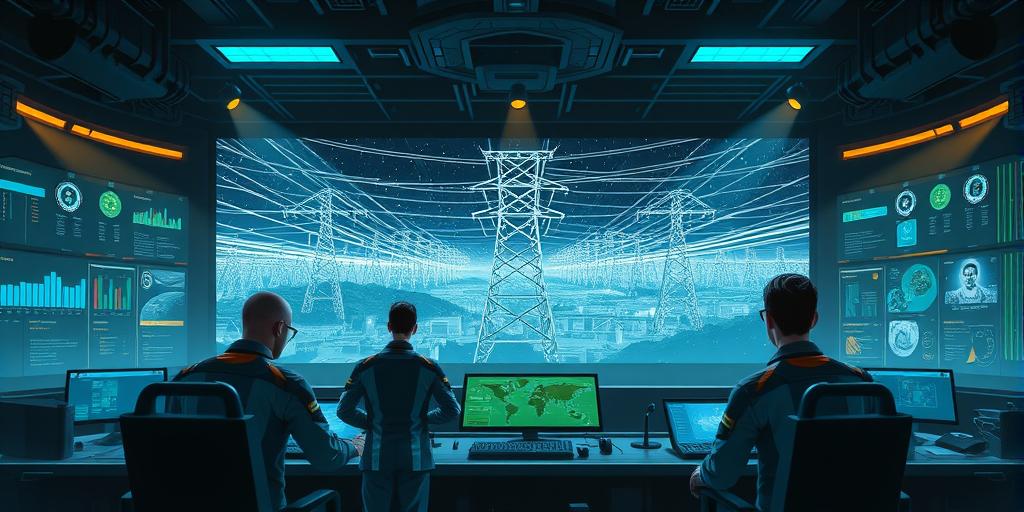Did you hear the buzz? A massive cyberattack targeting America's power grid was thwarted! Hold onto your hats, because this story is a wild ride of near misses, heroic defenses, and chilling glimpses into the vulnerabilities of our national infrastructure. Let's dive into the details of this close call and explore what it means for our future energy security.
The Attack: A Hair's Breadth Away from Blackout
The sheer scale of this cyberattack attempt is breathtaking. Reports indicate a sophisticated, multi-pronged assault targeting multiple regional grid operators. The attackers aimed to exploit known vulnerabilities in outdated systems, potentially causing widespread power outages across vast regions of the country. Think cascading failures, blackouts lasting days, and the widespread chaos that would ensue. The potential economic damage would be catastrophic, not to mention the societal disruption.
The Actors: Who Was Behind It?
Identifying the perpetrators with absolute certainty is still under investigation. However, early reports point towards a state-sponsored actor, possibly with ties to a nation known for its cyber warfare capabilities. But the question remains, which nation-state would risk such bold action? The investigation is ongoing, and we may not have all the answers soon, but as more information becomes available, it is critical to understand the nature of the threat and the ongoing implications for national security.
The Defenses: How Was It Stopped?
Thankfully, the attack was unsuccessful, thanks to a combination of factors. First, the proactive security measures in place by grid operators played a crucial role. These are often overlooked but are critical to protecting the infrastructure. Many grid operators have worked hard to improve their cybersecurity posture in recent years. Secondly, the coordinated response from government agencies such as the Cybersecurity and Infrastructure Security Agency (CISA) was swift and effective. The inter-agency coordination in such situations is always a work in progress, but the response in this instance points to the growing national security need for these coordinated responses.
The Aftermath: Assessing the Damage and Future Risks
While the attack was repelled, it serves as a stark reminder of how vulnerable our critical infrastructure is to cyber threats. This near-miss exposed the urgent need for upgrades, enhanced security protocols, and increased investment in cybersecurity for grid operators. This incident also raises concerns about the reliability and resilience of our nation's power grid.
The Economic Impact: A Costly Lesson
The financial costs associated with this attack, even though it was unsuccessful, are substantial. The resources spent on investigation, defense, and system upgrades could easily reach hundreds of millions of dollars. The true economic cost will be felt more broadly across many sectors.
The Societal Impact: Preparing for Future Attacks
The impact extends beyond just finances. The potential for widespread disruption highlights our vulnerability to these attacks. The societal impact that would have resulted from widespread power outages, including disruptions to healthcare, transportation, and communication, would have been catastrophic. This incident also highlights the importance of preparedness.
Strengthening Our Defenses: Investing in Grid Security
The incident should trigger urgent action to fortify the nation's power grid defenses. This includes increased funding for cybersecurity initiatives, nationwide adoption of advanced threat detection systems, mandatory security standards for grid operators, and comprehensive cybersecurity training for employees.
Modernizing the Grid: An Urgent Need
Many parts of the country's power grid are outdated and vulnerable. Modernizing the grid to incorporate advanced cybersecurity features is crucial for future resilience and protection. This involves investing in cutting-edge technologies such as AI-powered threat detection and automation for faster incident response.
Improving Collaboration: Public-Private Partnerships
Strengthening collaboration between the public and private sectors is key. This means fostering information-sharing, joint training exercises, and coordinated responses to future threats. The government and private industry must work together to protect critical infrastructure.
Call to Action: Stay Informed and Advocate for Change
This near-miss should serve as a wake-up call. The need for comprehensive upgrades to the nation’s power grid, improved cybersecurity measures, and strengthened coordination among government agencies and private companies is undeniable. We must all stay informed about these critical issues and advocate for policy changes that prioritize grid security and national infrastructure protection. Let's not wait for the next attack. Let's act now!




